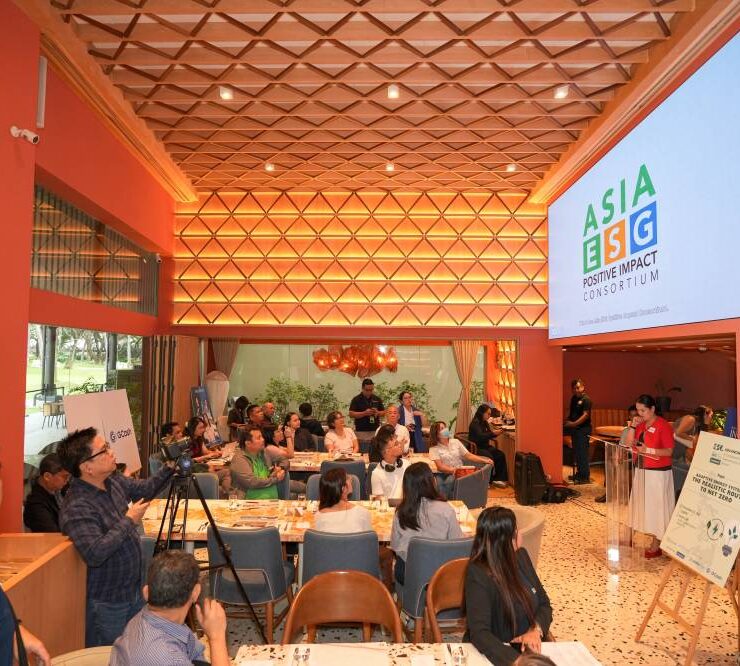Women in the workplace: Breaking barriers for good

We often speak about the barriers to women achieving their full potential and reaching the top management levels in an organization by referring to a “glass ceiling” they’re unable to break through.
The “glass ceiling” exists for many reasons, among them stereotyping and outdated perceptions that only women are inherently responsible for care work, lack of support mechanisms for career advancement to pursue jobs in high-paying fields, persistent gender biases that cause women to be viewed differently from men and impede them from advancing in their careers.
On the other hand, because of people’s unconscious biases, they create “glass walls” for others around them that cause women to be kept in isolation, blocking their promotions, or limiting their ability to perform well in their jobs.
Despite the seeming progress the Philippines has achieved in terms of gender-related initiatives, landing 25th out of 146 countries and first in Asia in the latest World Economic Forum (WEF) Global Gender Gap Report particularly on gender parity, and garnering a 77.9 percent score in closing the gender gap, there is still much more work to be done to achieve diversity, equity, and inclusion in Executive Leadership Teams (ELTs) in the corporate sector, particularly in publicly listed companies (PLCs).
Key findings
This was the topic of the Census of Women in ELTs that was launched recently by the Philippine Women’s Economic Network through its inaugural project, the Philippine Business Coalition for Women Empowerment. Among the key findings of the census were:
Women’s representation in ELTs have gradually increased. From only 38 percent in 2020, women comprised 40 percent of ELTs of Philippine PLCs by 2022. However, only three out of 10 PLCs are considered to have gender-balanced ELTs, and research shows that large companies tend to have more gender-balanced ELTs.
More women in ELTs still occupy functional roles. Line roles are mainly responsible for driving organizational goals and directions, and these roles are crucial for women to progress to leadership positions. In the overall composition of women in ELTs, more women still hold functional roles than line roles. However, a minimal increase was observed, with 40 percent of women in ELTs occupying line roles in 2020 versus 42 percent in 2022.
Industry-wise, women holding line roles are more represented in industries such as finance (48 percent), property, and services (both at 29 percent). Meanwhile, women in line roles are less represented in sectors like Exchange Traded-Fund (no representation or 0 percent, with only one ETF PLC in the country) and mining and oil (12 percent).
The study also reveals a gradual increase in the representation of women on boards from 2020 to 2022. A continuous 1 percent increase was observed each year in the three-year reference period: 18 percent in 2020, 19 percent in 2021, and 21 percent in 2022.
Still, despite the rising representation, women CEOs remain underrepresented in ELTs, with only 13 percent representation as of 2022.
Most PLCs have broad diversity policies. However, these need to be complemented by concrete targets in order to be measured and ultimately achieved. The research notes that, in fact, certain gender gaps and biases have resurfaced, which highlights the need for everyone to continue the work of advocating gender-balanced workplaces and supporting women to rise up to leadership positions.
A case in point is the persistence of unconscious bias in male-dominated industries such as mining and engineering, which require STEM skills that, according to still widespread perceptions, many women do not possess. There is also the problem of retaining talented women who have to balance their family and professional responsibilities or who have to make the difficult choice of giving up their career ambitions to care for their families. Not too many companies practice gender-friendly policies that would support and assist women to flourish both at work and at home. All of these contribute to the creation of a “leaking pipeline” or lack of female talent for promotion to ELT positions.
A case in point is the persistence of unconscious bias in male-dominated industries such as mining and engineering, which require STEM skills that, according to still widespread perceptions, many women do not possess
Call to action
Thus, the call to action for organizations to intentionally and deliberately adopt policies and implement programs that address identified gender issues in workplaces to drive positive changes. More collaborative efforts are likewise needed not only among industry players, but also between the private and public sectors and other nongovernment entities.
More importantly, as individuals, we all need to embody the values and principles of equality, fairness, and respect for others to influence and create impact in our workplaces.
As Risa Rustam, director of finance and human resources of the Indonesia Stock Exchange, said during the project launch, “Supporting gender equality and women empowerment is a moral obligation.”
More than that, Article 2, Section 14 of the 1987 Philippine Constitution specifically states that “The State recognizes the role of women in nation building, and shall ensure the fundamental equality of women and men.”
Building on that fundamental right of women to be treated equally, we all need to work together to amplify the voices of women, promote the power of dialogue, and consolidate our efforts to advance workplace gender equality for the Filipina leaders of today and tomorrow.
Ma. Aurora “Boots” D. Geotina-Garcia is founding chair and president of the Philippine Women’s Economic Network (PhilWEN), chair of the Philippine Business Coalition on Women Empowerment (PBCWE), and president of Mageo Consulting, Inc.





















